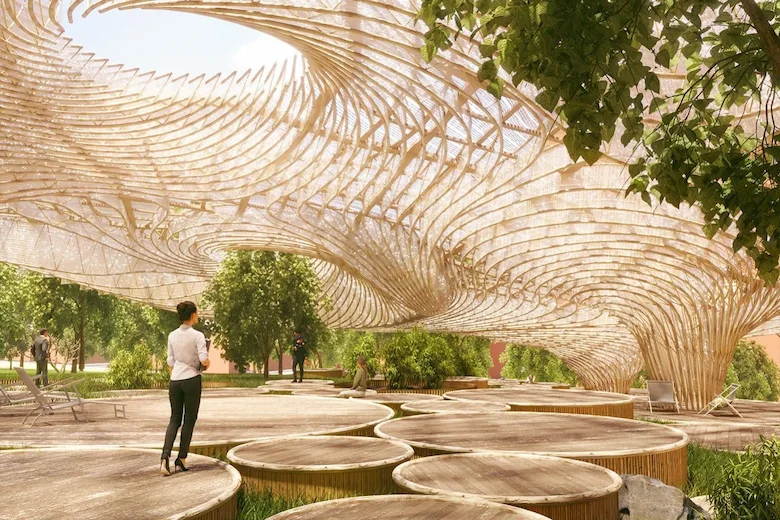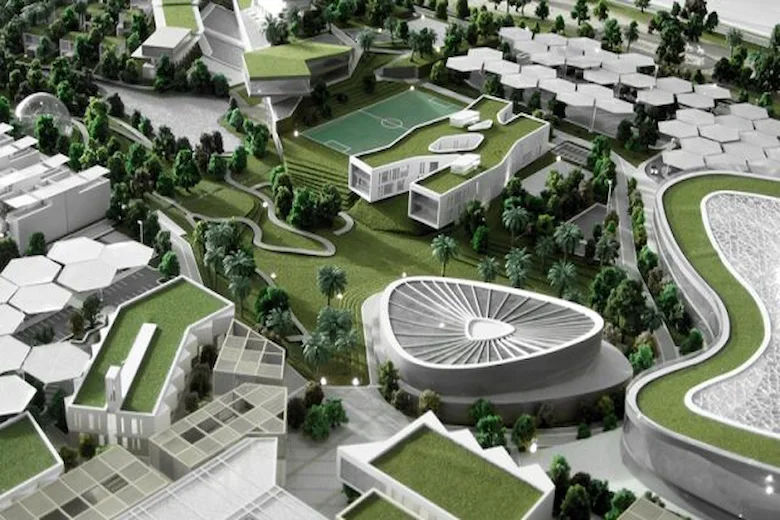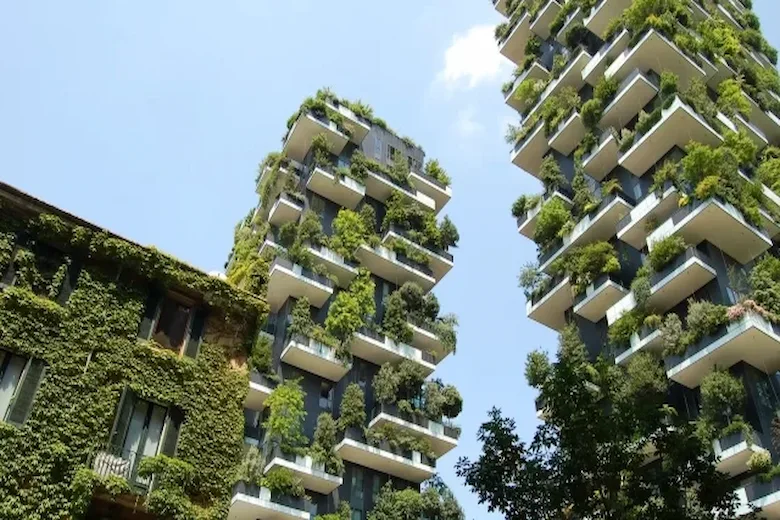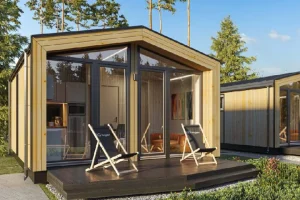Green architecture, as a new approach to design and construction, has been increasingly gaining attention in the world. This type of architecture, focusing on the use of renewable resources, optimizing energy consumption, and reducing negative environmental impacts, tries to guide buildings and urban spaces towards sustainability and compatibility with nature. Since the emergence of this movement in the mid-twentieth century, green architecture has become a basic need, and many countries have taken steps towards implementing sustainable and green projects. The impact of this approach in improving the quality of life, reducing energy costs, and protecting natural resources is no secret to anyone. Today, in this article, we are going to examine the history of green architecture. Stay with us.
What is green architecture?
Green architecture refers to the design and construction of buildings that pay special attention to reducing negative impacts on the environment and improving the quality of life of residents. This type of architecture focuses on using natural resources and renewable energies, optimizing energy consumption, and designing environmentally friendly spaces. In green architecture, principles such as using recycled materials, reducing waste production, and employing modern technologies to reduce water and energy consumption are of great importance. Also, this type of architecture includes designing spaces that help create a healthy environment for people to live in, such as using natural light, proper ventilation, and reducing noise and air pollution.
The main goal of green architecture is to create buildings that reduce negative impacts on the environment and help preserve natural resources. In this approach, in addition to reducing long-term energy costs, the health and comfort of residents are also considered. The use of modern technologies such as solar panels, rainwater collection systems, and green walls are just some of the measures taken in this type of architecture. This design style is increasingly popular around the world, and many countries have enacted laws and standards to encourage the construction of green and sustainable buildings. Stay tuned as we introduce you to the history of green architecture.


History of Green Architecture
The history of green architecture dates back to the mid-20th century, when concerns about the negative impacts of construction on the environment began. Initially, with the industrialization of societies and the expansion of cities, excessive energy consumption and the use of non-degradable materials, air pollution and climate change became serious problems. This trend led architects and engineers to look for ways to reduce damage to the environment and improve the quality of life of building occupants. In the 1960s and 1970s, environmental movements grew and attention to the conservation of natural resources and renewable energies began to increase. At this time, green architecture principles such as the use of renewable energy, reducing resource consumption and recycling materials were introduced.
In the 1990s, with the spread of new technologies and increasing public awareness of climate change, green architecture became a common approach to building design. During this period, standards such as LEED (Leadership in Energy and Environmental Design) were introduced to encourage the construction of green and sustainable buildings, and many countries around the world, especially in Europe and North America, began to implement environmental regulations and policies in the field of construction. In recent years, green architecture has become not only an environmental approach but also an economic choice, as green buildings can significantly reduce energy costs. This trend continues and is increasingly recognized as a fundamental need in construction worldwide.
Leading countries in the history of green architecture
Several countries in the world are leaders in the history of green architecture and sustainable construction. One of these countries is Denmark, which is known for its use of renewable energy and smart systems to reduce energy consumption. Copenhagen, the capital of Denmark, has become one of the green and sustainable cities with projects such as the use of wind energy and solar energy. In addition, in Denmark, strict laws and standards have been implemented in the field of energy efficiency and building design, which help reduce environmental impacts.
Another leading country in this field is Germany, which has been particularly successful in the use of new technologies such as geothermal heating and cooling systems and solar panels in green architecture. Germany has made significant progress in the field of sustainable design with careful planning to reduce carbon emissions and promote green buildings. In this country, projects such as Passivhaus (very low energy houses) are being implemented widely. Switzerland and Canada are also other prominent countries in the field of green architecture, known for their use of natural resources and sustainable technologies in design and construction.
The impact of green architecture on the success of countries
Green architecture has a direct and indirect impact on the economic, social and environmental success of different countries. One of its main impacts is improving energy efficiency, which helps reduce costs in the long term. Countries that have paid attention to green architecture and sustainable design have been able to reduce public and private costs in various sectors by reducing energy and natural resource consumption. For example, advanced countries such as Germany and Denmark, which widely use renewable energy and green buildings, have achieved significant successes in terms of economy and energy security due to reduced dependence on fossil energy sources and better efficiency.
In addition to economic benefits, green architecture has positive effects on the quality of life and public health. Green buildings, especially those that use natural light, proper ventilation and environmentally friendly materials, provide better conditions for residents. This can lead to a reduction in health problems related to air pollution and poor living conditions. As a result, countries that have incorporated green architecture into their urban development plans have not only managed to conserve natural resources and reduce negative environmental impacts, but have also improved people’s quality of life and increased social satisfaction. These factors collectively strengthen the economy, improve the quality of life, and increase the global standing of countries in the field of sustainable development.


Final Words
As you can see, in this article, we have thoroughly examined the history of green architecture. We have learned that green architecture is not only an environmental necessity but also a smart economic choice that helps countries manage their natural resources optimally and reduce long-term energy costs. This type of architecture has a positive impact on human societies by improving the quality of life and health of building occupants. Leading countries in this field, such as Denmark, Germany, and Switzerland, have shown that by investing in green architecture, sustainable development, pollution reduction, and improved economic productivity can be achieved. In general, green architecture is not only an approach to environmental protection, but also a key factor in the economic, social, and global success of countries. Thank you for your support.
Ohaddeco Group specializes in providing environmentally friendly wall coverings, namely wooden acoustic wall covering and wooden thermowall. The company is also ready to offer various types of LSF structure as well as KIT HOUSE structures. Dear friends, you can contact our experts through communication bridges for more information and free consultation.




